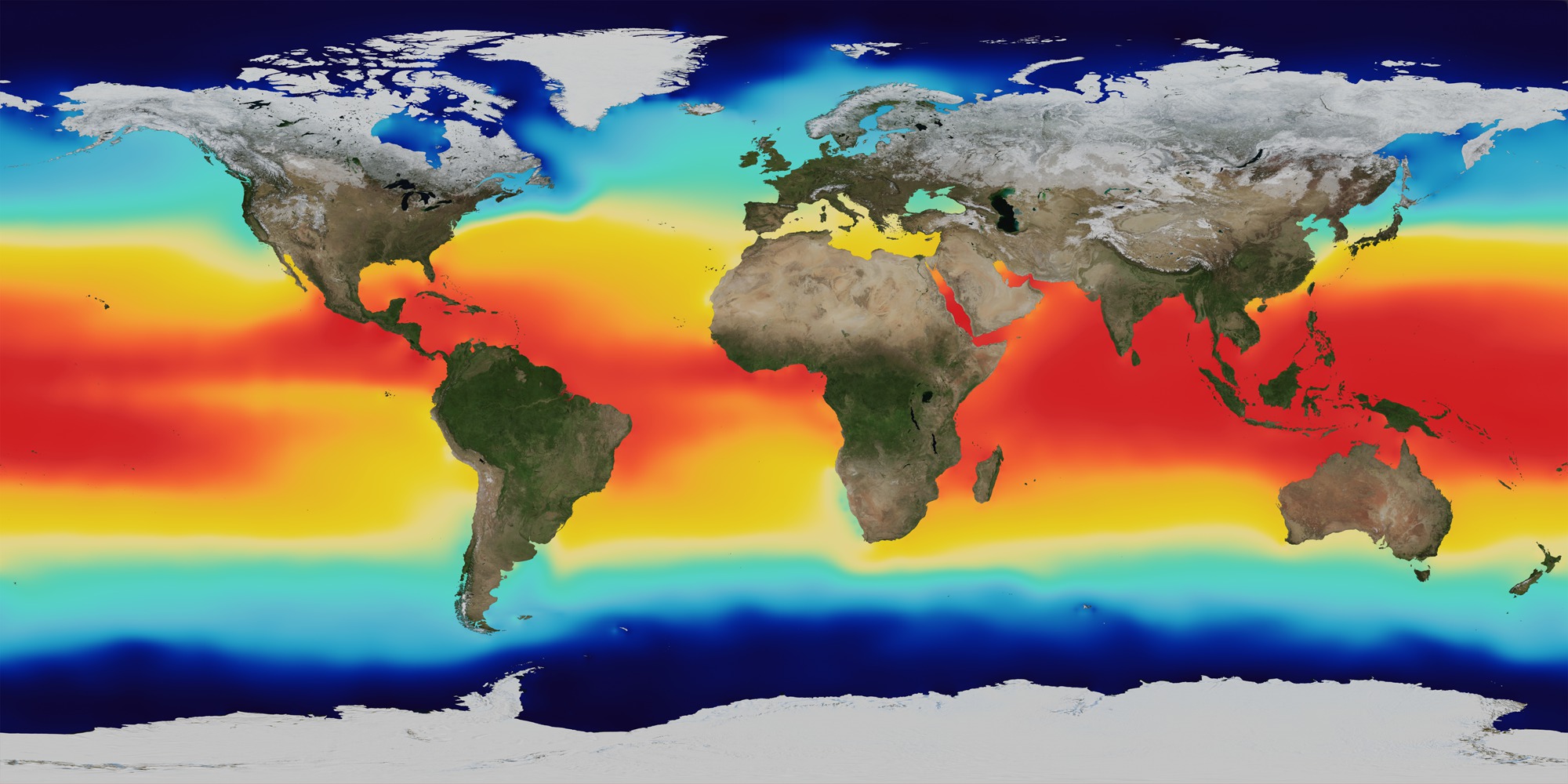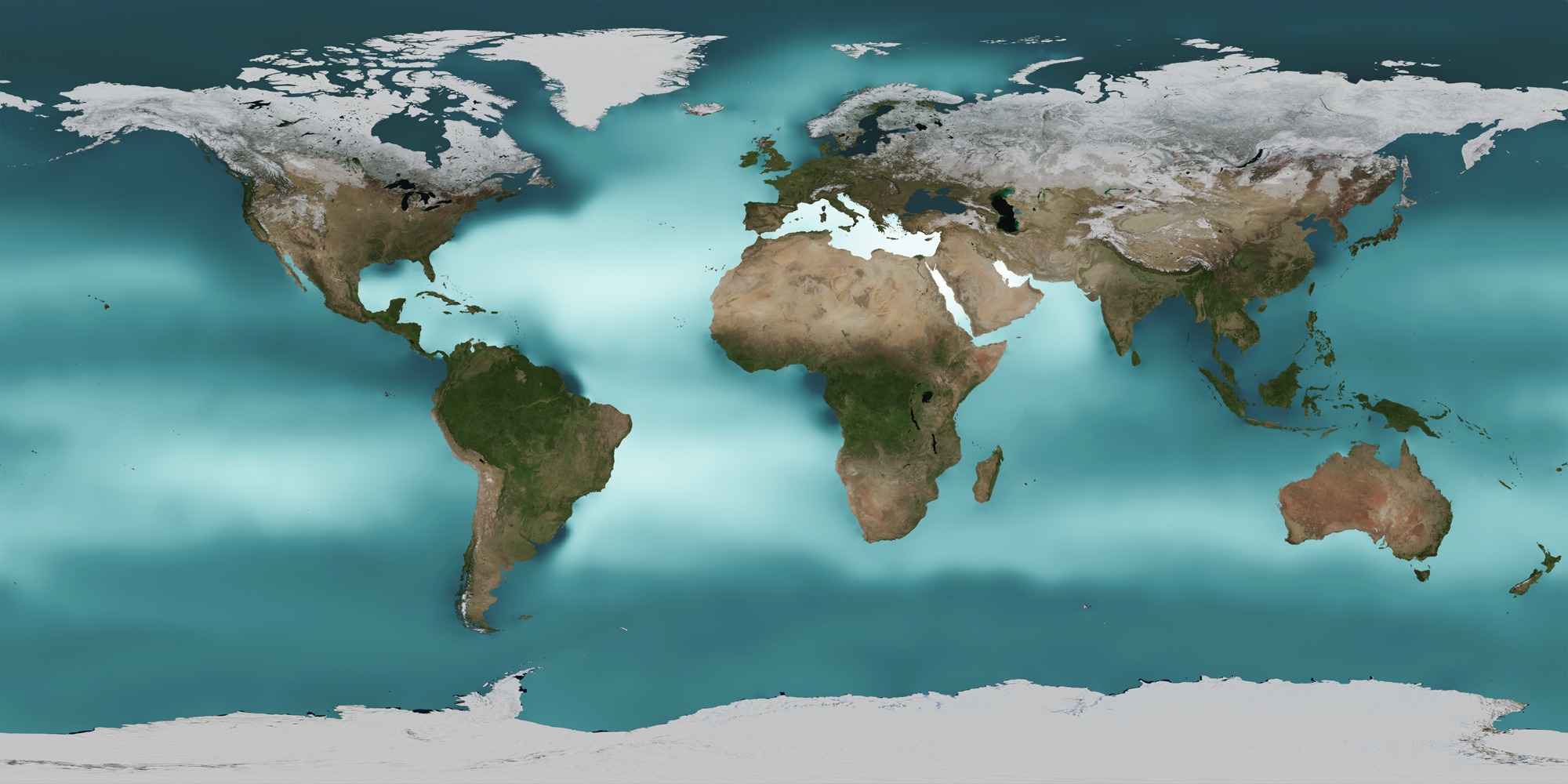Asking Questions and Defining Problems Using MND

An important scientific practice is the asking and refining of questions that lead to rich descriptions, explanations, and reasoning of how the natural and designed world works, as well as those investigations of variables that can be empirically tested.
Students at any grade level should be able to ask questions of each other about the texts they read, the features of the phenomena they observe and the conclusions they draw from their models or scientific investigations (NRC Framework, 2012, p 52)
Global map of average Sea Surface Temperature, 2009


Sea Surface Temperature color scale
Global map of average Sea Surface Salinity, 2009


Sea Surface Salinity color scale
Example Questions:
- Why are some areas of the world's oceans warmer than others? saltier than others?
- How might the sea surface temperature and salinity data look different in throughout the year?
- How does temperature affect salinity in the ocean?
- How does temperature vary by latitude? Why?
- What processes change the salinity of the seawater?
K-2: Asking questions and defining problems in grades K–2 builds on prior experiences and progresses to simple descriptive questions that can be tested.
- Ask questions based on observations to find more information about the natural/designed world. (K-ESS3-2)
3-5 Asking questions and defining problems in 3-5 builds on K-2 experiences and progresses to specifying qualitative relationships.
- Ask questions about what would happen if a variable is changed. (4-ESS1-1)
- Ask questions that can be investigated and predict reasonable outcomes based on patterns such as cause and effect relationships.
6-8: Asking questions and defining problems in grades builds on grades K-5 experiences and progresses to specifying relationships between variables, and clarifying arguments and models.
- Ask questions to identify and clarify evidence of an argument. (MS-ESS305)
- Apply scientific principles to design an object, tool, process, or system. (MS-ESS3-3)
9-12: Asking questions and defining problems in 9-12 builds on K-8 experiences and progresses to formulating, refining, and evaluating empirically testable questions and design problems using models and simulations.
- Ask questions that arise from careful observation of phenomena, or unexpected results, to clarify and/or seek additional information and relationships.
- Ask questions to determine relationships, including quantitative relationships, between independent and dependent variables.

